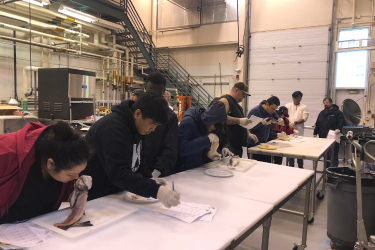KEY MESSAGE:
NOAA Fisheries is accepting comments on an application for an amendment to an exempted fishing permit (EFP) from the Florida Fish and Wildlife Conservation Commission (FWC). NOAA Fisheries provided FWC with an EFP in November 2018 for certain areas in the South Atlantic. FWC is requesting to amend their EFP to add additional sampling areas (including portions of the Gulf of Mexico [Gulf]), additional fishing vessels, additional number of traps, remove the requirement for research traps to have current certificates, and remove the approval for fishermen to sell any species caught from the research specific trap except lionfish. The updated proposal is summarized below. The applicant is testing various modifications to wire spiny lobster traps to harvest lionfish. This study intends to examine the effectiveness and performance of modified trap designs for capturing lionfish, with the goal of identifying the best modifications to maximize lionfish catch and reduce bycatch of other species. The activities would also derive biological life history information to improve lionfish control.
AMENDED PROJECT DESCRIPTION:
- Increase the sampling area from Alligator and Looe Key in the South Atlantic to all Federal waters of the South Atlantic off Monroe County, Florida, and portions of the Gulf. In the Gulf, sampling with traps would occur in depths from 150-300 feet (46-91 meters) southwest of a line defined by 25°21’ N. lat., 84°00’ W. long at the northwest corner and by 24°28’ N. lat., 83°00’ W. long., at the southeast corner (see map below).
- Increase the sampling period from two times per month to two to four times per month over the course of the calendar year, including during the spiny lobster closed season.
- The maximum number of traps that would be allowed to be deployed at any given time would increase from 100 to 300 (200 in the South Atlantic and 100 in the Gulf).
- Maximum soak times would increase from 21 to 28 days per deployment.
- Increase maximum number of sampling trips from 40 to 160 per year.
- Increase number of federally permitted commercial fishing vessel participating in the study from two to eight.
- Remove the requirement that traps would be required to have a current endorsement, stamp, or certification; however, FWC would mark each of the research traps.
- Contracted commercial fishermen would no longer be permitted to sell any catch from the research traps except for harvested lionfish not needed for research purposes.
- Representative sub-samples of any fish species would be collected by FWC for species identification verification in the laboratory as needed.

NOAA Fisheries finds this application warrants further consideration, and is seeking public comment on the application. A final decision on issuance of an amended EFP will depend on NOAA Fisheries' review of public comments received, the South Atlantic Fishery Management Councils’ and Gulf of Mexico Fishery Management Councils’ recommendations, consultations with the affected states, and the U.S. Coast Guard, as well as a determination that it is consistent with all applicable laws.
HOW TO COMMENT ON THE APPLICATION:
The comment period is open now through August 31, 2019. You may submit comments by electronic submission or by postal mail. Comments sent by any other method (such as e-mail), to any other address or individual, or received after the end of the comment period, may not be considered by NOAA Fisheries.
Application information: https://www.fisheries.noaa.gov/southeast/resources-fishing/lionfish-traps-exempted-fishing-permit-applications.
Electronic Submissions: Submit all electronic public comments via the e-Rulemaking portal.
1. Go to https://www.regulations.gov/docket?D=NOAA-NMFS-2019-0084.
2. Click the "Comment Now!" icon, complete the required fields.
3. Enter or attach your comments.
Mail: Submit written comments to Kelli O’Donnell, NOAA Fisheries, Southeast Regional Office, 263 13th Avenue South, St. Petersburg, FL 33701.
SIGN UP FOR TEXT MESSAGE ALERTS - FIND OUT ABOUT IMMEDIATE OPENINGS AND CLOSURES
NOAA's Text Message Alert Program allows you to receive important fishery related alerts via text message (SMS). Standard message & data rates may apply. You may opt-out at any time.
Text alerts you may receive include:
- Immediate fishery openings and closures
- Any significant changes to fishing regulations that happen quickly
Sign up for one or more of the following groups:
- Gulf of Mexico Recreational Fisheries Related Alerts
- Text GULFRECFISH to 888777
- Gulf of Mexico Commercial Fisheries Related Alerts
- Text GULFCOMMFISH to 888777
- South Atlantic Recreational Fisheries Related Alerts
- Text SATLRECFISH to 888777
- South Atlantic Commercial Fisheries Related Alerts
- Text SATLCOMMFISH to 888777
- Caribbean Fisheries Related Alerts
- Text CARIBFISH to 888777
![]() Join us every other Friday on NOAA Fish Instagram for Rec Fish Friday!
Join us every other Friday on NOAA Fish Instagram for Rec Fish Friday!
Other contacts:
Media: Kim Amendola, 727-551-5707
Allison Garrett, 727-551-5750

